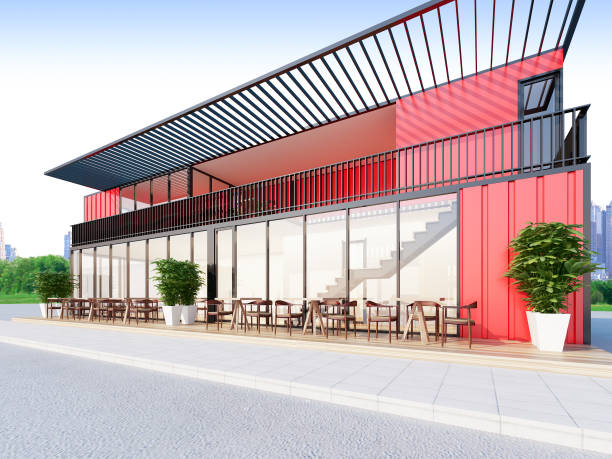The last few years have seen a resolute boom in shipping container conversions, with the standardised metal boxes being used for practically any purpose you can think of and several others besides.
The reasons why are relatively straightforward; the sheer magnitude of freight in an era of containerisation means that there are a lot of shipping containers that would otherwise be melted down or discarded, making them environmentally conscious.
Whilst a 40ft container would be big enough for a small house, they are also designed for stacking and can form the basis of transportable modular structures, as well as having a distinct corrugated look that gives it a particularly appealing industrial aesthetic.
However, whilst they are often an ideal building material, they also have quirks, and much like how you need to use concrete, steel or wood in a certain way to maximise its strengths, there are considerations for containers as well.
Consider The Ceiling
By default, a shipping container is 8.5 feet high, which when fitted with its standard floor is closer to eight feet. This is quite low as it is, but factoring in that this is measured before a ceiling or a proper floor has been fitted, it can require either creative design or a nonstandard container to resolve.
Both are possible but can add to the budget and should be part of early design considerations.
Stacking And Structural Integrity
Shipping containers are best used stacked together, but one important point to keep in mind is that if you are stacking containers, you will need to be mindful that you avoid cutting so much out of the container that it no longer can support the weight of containers above it.
Working with experts will prevent this but this is something that an architect will need to keep in mind.
Insulation
Metal gets very cold in winter and very hot in summer, so additional insulation materials will need to be factored into both the budget and space considerations of a container project.
It is certainly not insurmountable, but it does require additional thought to overcome.
Choosing The Right Container
Whilst choosing a shipping container as a building material is a greener option than brick, mortar or concrete, there are levels and layers to these green credentials and can lead to some degree of compromise.
Whilst there are a lot of used shipping containers on the market that are perfectly suited for conversion, there are also some that have had long, hard lives on the sea, filled with rust and contamination that can at times leak into the wooden floor.
This can be fixed but requires careful professional intervention to do so, and can add to the cost and potentially affect a given container’s viability as a material for construction.
Location
Container conversions make the most sense in areas that have a lot of them, such as port cities and industrial areas where a lot of containers are being used and moved regardless, but if the supply is low, costs can increase to meet demand.
As well as this, whilst shipping containers even with modifications are a very cost-effective building material, the cost of the land you are building on is an important consideration.

